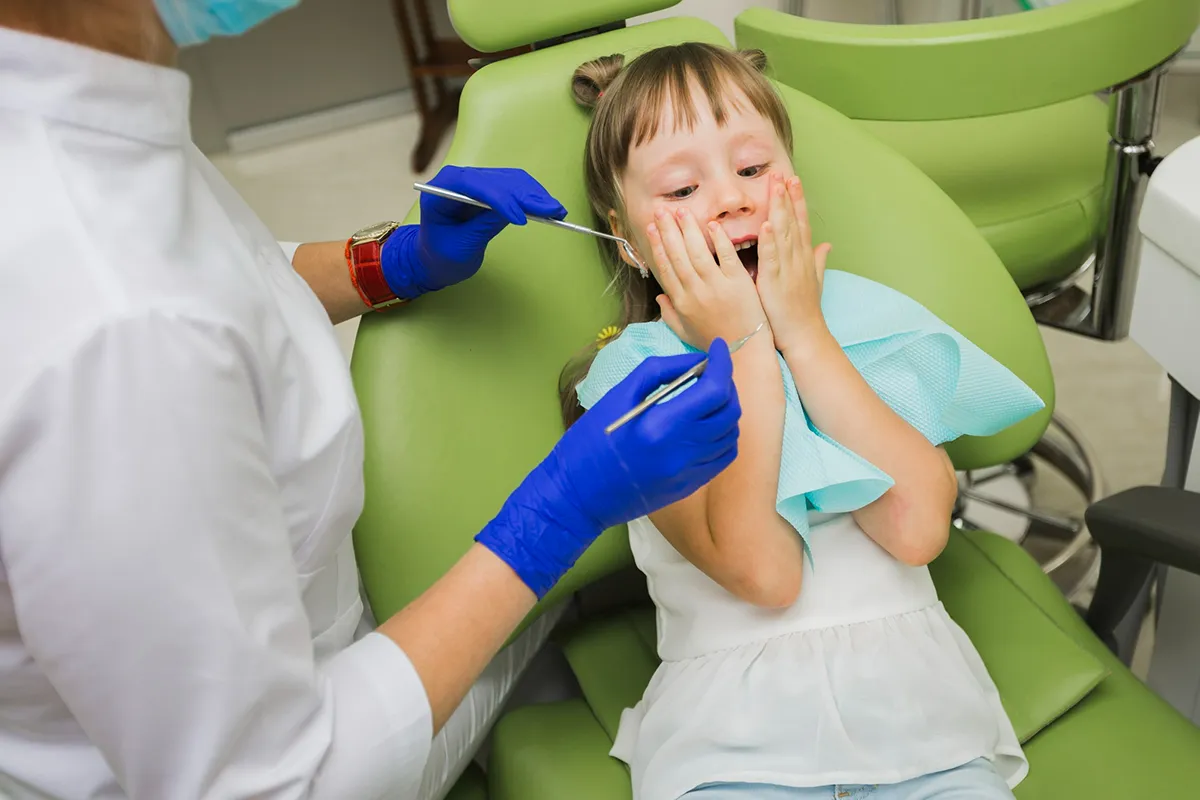Orthodontic Awareness: Recognizing Signs of Orthodontic Issues in Children
Information on Recognizing Signs of Orthodontic Issues in Children and The Importance of Early Intervention
Orthodontic challenges can manifest in children differently, impacting tooth alignment and jaw development. Malocclusions, which include overbites, underbites, crossbites, and open bites, affect nearly 90% of children.
Crowding, a prevalent issue involving insufficient space for proper tooth alignment, affects around 30% of the population. Furthermore, premature loss of baby teeth, affecting approximately 20% of children aged 5 to 11, disrupts the normal eruption of permanent teeth. Habits such as thumb-sucking also contribute to orthodontic difficulties.
Beyond the physical aspects, there is a noteworthy psychological impact. Timely orthodontic intervention tackles immediate concerns and contributes to a child's overall health, well-being, and future oral health prospects.
Orthodontic care focuses on correcting misalignments of teeth and jaws. Proper alignment ensures that the upper and lower teeth meet when biting, preventing issues like overbite, underbite, and crossbite. Orthodontic treatment also contributes to the harmonious development of a child's facial structure.
Proper alignment not only enhances the smile but also supports overall facial aesthetics. Well-aligned teeth and jaws are essential for good speech development and efficient chewing function. Orthodontic intervention can address issues that impact these functions. Orthodontic treatment aims to reduce the risk of TMJ (Temporomandibular joint) issues, which can cause jaw pain, headaches, and other discomforts.
This blog will explore common orthodontic issues in children and their symptoms, fostering orthodontic awareness for your better understanding. In doing this, you can consult with an orthodontic specialist for early intervention if needed. Earlier orthodontic intervention can have long-term benefits, preventing more serious dental issues that may require extensive treatment.
Common Orthodontic Problems in Childhood
Orthodontic issues during childhood can significantly impact oral health, influencing aesthetics and teeth and jaw functionality. The common orthodontic problems in childhood include:
“Orthodontic care goes beyond merely straightening teeth; it’s about enhancing the canvas of a unique and radiant smile.”
- Malocclusions, a prevalent orthodontic issue in childhood, encompass a spectrum of misalignments affecting how teeth fit together. Overbites, underbites, crossbites, and open bites can challenge the child's facial structure. These misalignments may impact speech patterns, chewing efficiency, and oral health.
- Crowded teeth often overlap or twist, presenting challenges for adequate oral hygiene. Early orthodontic intervention can help unravel the complexities of overcrowded teeth, promoting a visually appealing smile and comprehensive oral health.
- The premature loss of baby teeth may influence the alignment of incoming permanent teeth and contribute to orthodontic challenges.
- Habits like thumb-sucking can exert significant pressure on developing teeth, potentially leading to misalignments. Breaking such habits during early childhood is fundamental to shaping orthodontic health.
- Orthodontic issues, when left unaddressed, can manifest in speech difficulties and challenges in chewing. Optimal alignment of teeth and jaws is essential for these fundamental functions.
- Misaligned teeth can pose challenges in maintaining proper oral hygiene. Difficulty reaching certain areas during brushing and flossing may increase the risk of cavities and gum issues.
Potential Signs of Orthodontic Issues in Children
- Misaligned Teeth
Misaligned teeth can manifest in various forms, from crowded teeth and gaps to teeth that don't align properly when the jaws are closed. Early signs may include noticeable irregularities in the positioning of teeth.

Well-planned dental check-ups play a crucial role in early detection, allowing orthodontic professionals to assess the alignment of teeth and initiate interventions when necessary. Addressing misalignments in their early stages often results in more straightforward and effective orthodontic treatments.
- Difficulty in Chewing or Biting
Observing a child's chewing and biting patterns provides functional clues to potential orthodontic challenges. Difficulty in biting evenly, discomfort during chewing, or changes in jaw movement may indicate underlying alignment issues. Prompt, professional evaluation ensures a comprehensive understanding of the issue and guides the development of an appropriate intervention plan.
- Mouth Breathing
Mouth breathing, especially during sleep, can serve as an indicator of both potential airway and orthodontic issues. Exploring this aspect involves understanding the breathing patterns of the child and recognizing when mouth breathing becomes persistent. Professional assessment helps identify the root cause and guides appropriate interventions for orthodontic and respiratory concerns.
- Thumb-Sucking Beyond Early Childhood
While thumb-sucking is a natural habit in early childhood, its persistence beyond a certain age can contribute to orthodontic problems. The pressure exerted by thumb-sucking can influence the alignment of developing teeth.
The potential orthodontic implications of prolonged thumb-sucking need proactive steps to address the habit. It involves age-appropriate strategies to discourage thumb-sucking and consulting with orthodontic professionals if necessary.
- Speech Development
Changes in speech patterns, such as difficulty pronouncing certain sounds or persistent speech issues, can be subtle indicators of orthodontic concerns. Understanding the connection between orthodontic problems and speech difficulties is essential. Early intervention in addressing speech-related orthodontic challenges contributes to improved communication skills.
- Early Loss of Baby Teeth
The premature loss of baby teeth may disrupt the natural sequence of permanent tooth eruption. This disruption often leads to misalignments and orthodontic challenges. Regular dental check-ups facilitate the identification of potential issues, enabling timely interventions to mitigate the impact of early tooth loss.
- Jaw Pain or Discomfort
Children experiencing jaw pain or discomfort, primarily during activities like chewing or biting, may exhibit early signs of orthodontic issues. These symptoms can be associated with malocclusions or misalignments that warrant professional evaluation. Seeking professional advice ensures a thorough examination of the underlying orthodontic concerns and the implementation of suitable interventions.
The Significance of Timely Intervention in Addressing Orthodontic Concerns
Early intervention for orthodontic issues lays the groundwork for a lifetime of optimal oral health. Here's a reflection on the significance of intervening early in the journey of orthodontic care:

- Proactive Correction of Developing Issues:
Early intervention allows orthodontic professionals to identify and address potential issues as they are still developing. This proactive approach enables corrections during a child's growth phase. Also, it takes advantage of natural growth processes to guide the alignment of teeth and jaw development.
- Preventing Complications and Long-term Impact:
Orthodontic issues, when left unaddressed, can lead to complications such as uneven wear of teeth, jaw pain, difficulty chewing, and speech problems. Early intervention mitigates the risk of these complications, preventing long-term impact on oral health and overall well-being.
- Optimizing Facial Development:
Properly aligned teeth and jaws contribute to harmonious facial development. Early intervention supports the optimization of facial aesthetics, positively influencing a child's appearance and fostering confidence in their self-image.
- Reducing Treatment Duration and Complexity:
Addressing orthodontic issues during the formative years often results in shorter and less complex treatments.
- Establishing Good Oral Health Habits:
Children who receive timely orthodontic care are more likely to maintain a lifetime of optimal oral health practices, understanding the importance of routine dental check-ups and proper oral hygiene.
- Preventing Speech and Chewing Difficulties:
Specific orthodontic issues, if left unattended, can contribute to speech problems and difficulties in chewing. Early intervention helps correct these issues, ensuring a child's speech development and nutritional habits are not adversely affected.
Final Thoughts
Nurture a lifetime of bright smiles for your child! Arrange an early intervention consultation with our skilled orthodontic team to proactively address growth and development concerns. Focusing on the early stages prevents complications and fosters optimal oral health. Join our collaborative effort involving parents, caregivers, and orthodontic professionals as we sculpt and maintain healthy, radiant smiles. Initiate the journey toward enduring oral well-being for your child – reach out to us today and take that pivotal first step!
Contact your kids' dentist in Stockton, Dr. Sajjad Rizvi, D.D.S. at Happy Kids Dental, to learn how to recognize orthodontics issues in children.
Resource:
Preventative Care for Children: Tips for Good Oral Hygiene
*This media/content or any other on this website does not prescribe, recommend, or prevent any treatment or procedure. Therefore, we highly recommend that you get the advice of a qualified dentist or other medical practitioners regarding your specific dental condition*
Subscribe To Our Newsletter
Get Updates And Learn From The Best


